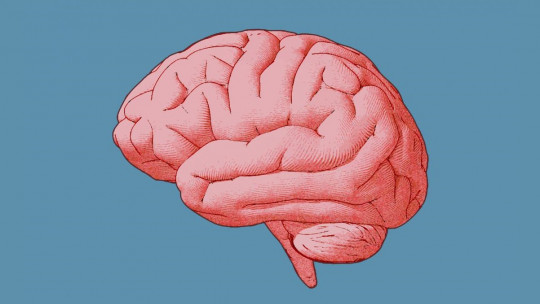Many of us are fascinated by the idea of learning new languages, and being able to interact with other cultures and communicate with people from other countries enriches us enormously. But learning languages is not easy at all, and although there are individuals who absorb new languages as if they had a gift for it, most of us mortals must work hard to be able to master a language that is not our native language.
If you want some tips for learning languages, in this article you can find a list that will be very useful to you, but it will also be useful for you to know What are the easiest and most difficult languages to learn?
The difficulty of being a polyglot
Not all languages are equally easy to learn, and it must be said that
When it comes to acquiring a new language, the difficulty is relative On the one hand, the person’s motivation and desire to learn are a determining factor, so is living in the country where that language is spoken natively and, logically, it will always be easier to learn a new language if it is similar to our mother tongue. For example, if we speak Spanish and want to learn Italian or Romanian.
Assuming that our reference language is Spanish below you can find out which of the languages with a well-established and cohesive number of speakers and more than 5 million speakers are easier and more difficult for you.
Easiest languages to learn
For Spanish speakers,
The following languages are the ones that present the least difficulty:
1. Catalan
Catalan is a language spoken in much of the Mediterranean coast of the Iberian Peninsula, as well as in the Balearic Islands and some areas of France. Curiously, the language family from which it comes, the Occitan-Romance languages, is more widespread in the latter country than in Spain. However,
the influence of the official language in the entire kingdom of Spain has made it very easy to learn for all Spanish speakers.
2. Italian
Italian is a relatively easy language to learn for Spanish speakers, and not only because of the great influence that its culture has had on Mediterranean countries. Italian is also rooted in Latin, providing great ease in learning vocabulary, as it is familiar to Spanish speakers.
This language is easy to read by those of us who speak Spanish, except for some phonemes and double letters Similarities are also evident in the construction of the sentences.
3. Portuguese
Portuguese is spoken mainly in Portugal and Brazil This language is a first cousin of the Spanish language, and we must not forget that the territory of Portugal shares a peninsula with Spain. That is why they share great similarities and, in fact, it is similar to some languages such as Galician, spoken by the inhabitants of Spain.
4. French
French is a language
widely used both in France and in many other countries worldwide. This beautiful language shares an alphabet and many words with Spanish. Spanish speakers find learning French very easy and very useful because it is an important language widely used in Europe.
5. English
Although English is not the easiest language to learn for some people, it is one of the most accessible languages and that is why it is the most used language in the world and spoken by the most nationalities. One of the reasons why English is easy to learn is because there is a great educational offer to train in this language and the British and American influence is very great around the globe.
On the other hand,
a large amount of their vocabulary is based on words with Latin roots something that does not happen in other Germanic languages such as, for example, German.
6. Romanian
Romanian is, like Spanish,
a romance language, so they are both related. However, the latter has acquired many everyday words from Slavic and Hungarian languages. It retains much of the grammatical structure of Latin, although the articles can be complicated to learn.
7. Greek
Historically we have always been influenced by the Greeks, and although today Greek civilization is very far from the context in which figures like Aristotle, Socrates or Plato lived, we share many terms in our vocabulary with the Greek. We may have serious difficulties when reading or writing it, but When spoken the sounds of the vowels and consonants are similar to those of Spanish
8. Afrikaans
The Afrikaans
It is known to be something like an easy version of Dutch, and is a language spoken in South Africa and Namibia. It actually has many words that are similar in spelling and meaning to English and Dutch. Although from the point of view of job opportunities it will not interest many people, it is a relatively easy language to learn.
9. Russian
Russian is one of the most spoken languages in Europe, and there are also so many cultural elements generated in this language that finding material to learn it is easy. Furthermore, the sounds on which its pronunciation is based are similar to those of Spanish, and its vocabulary is greatly influenced by Latin.
10. Malay
Although the majority of its speakers are concentrated in a place on the planet very far from Spain, Curiously, the Malay language is easy to learn The reasons for this are that its grammar is relatively simple, its sounds are easy to reproduce and, as it is an agglutinative language, part of the vocabulary can be memorized simply by adding suffixes and prefixes to others that are already known.
More difficult languages
Regarding the difficulty,
The most complicated languages to learn are:
1.Hindi
This is the fifth most spoken language in the world due to its spread throughout the societies of India, a highly populated territory. In addition, it is capable of turning anyone who has Spanish as their mother tongue upside down. Not only is its structure totally different from the Latin alphabet; Furthermore, the pronunciation is nothing like that of Spanish.
2. Yoruba
This language is spoken by about 22 million people, mainly in Nigeria, Togo and Benin. Its relationship with Spanish is practically nil, since
It is part of the Niger-Congolese languages
3. Korean
Korean is the official language of North and South Korea and is spoken by more than 80 million people worldwide. One of the most complicated languages to learn.
4. Arabic
The Arabic language was first spoken during the 6th century. This language, which is used in a wide range of territories,
It extends from the Middle East to the extreme west of the Maghreb Most of its spoken varieties are unintelligible and are said to constitute a sociolinguistic language.
5. Zulu
Zulu is spoken by about 9 million people, especially in South Africa. One of its most striking features is
the use of tongue “clicks” used as consonants something that also happens in other languages on the African continent.
6.Tamil
In a similar way to Hindi, this language is so different from Spanish in all aspects that it is difficult to find useful elements in Spanish in order to learn it: neither pronunciation, nor vocabulary nor grammar have much to do with it.
7. Thai
The Thai language is the official language of Thailand, and belongs to the Tai-Kadai language family, where almost half of its words are derived from the Pali or Sanskrit language. the thai
It is basically tonal and analytical and is known for its complex orography
8. Finnish
Finnish is one of the most difficult European languages for a Spanish speaker to learn, among other things because it does not even belong to the group of Indo-European languages. That means
our language is more related to Persian than to what is spoken in Finland
9. Hungarian
Hungarian is the official language of Hungary, spoken not only in this country, but also throughout Slovakia, Ukraine, Serbia and Romania. It belongs to the Uralic language family, like Finnish.
10. Chinese (Mandarin)
It is the most spoken language in the world because about a fifth of the world’s total population speaks Chinese, mainly in the People’s Republic of China, Taiwan and Singapore. This language is considered one of the most difficult to learn, since the alphabet is completely different from ours and
Their writing system is fundamentally based on memorization of thousands of elements.










